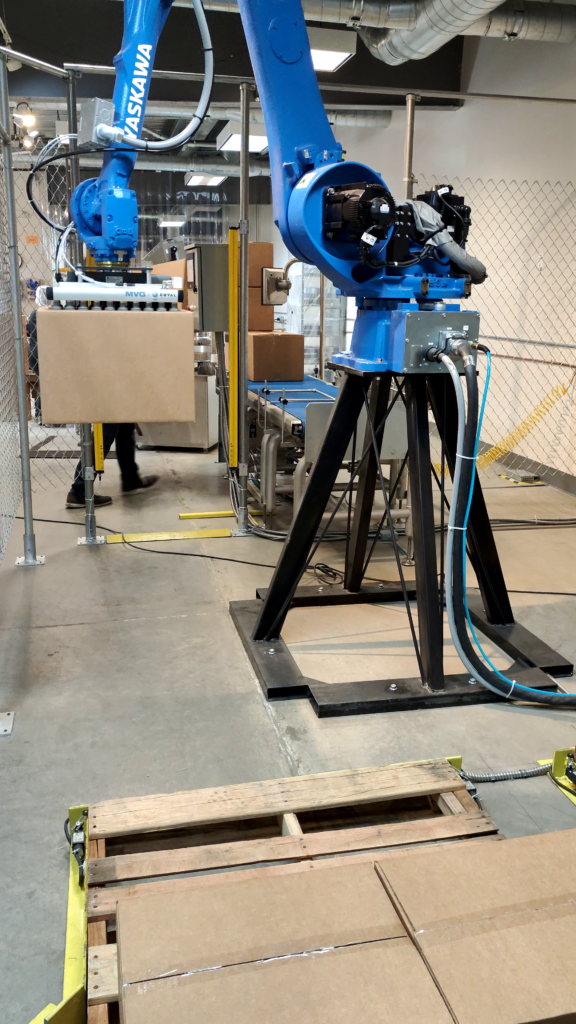Introduction
This case study highlights the successful integration of robotics technology at a manufacturing facility to address the challenges of heavy manual labor and workforce shortages in the packaging department. By leveraging robotics, the company not only enhanced worker safety but also optimized operational efficiency and productivity.
The Challenge
At the end of the packaging line, employees were tasked with palletizing boxes weighing up to 60lbs, stacking them as high as 8 feet. The labor-intensive nature of this task posed significant safety concerns, especially for the aging workforce comprised mostly of employees aged 40-60. Additionally, the company faced difficulty in recruiting new employees willing to perform this physically demanding job. Customized programming for robotics integration was further complicated by the variety of box sizes and the lack of technical expertise among existing staff.
The Solution
To alleviate these challenges, the company implemented robotics technology to automate the palletizing process. A specialized robotic system was programmed to handle various box sizes and stack them onto pallets with precision and efficiency. To address the lack of technical proficiency among staff, a customized touch screen interface was developed specifically for the company’s needs, simplifying operation and monitoring of the robot.
Given the facility’s high production demands, the robotic system was programmed to stack boxes onto two different pallets sequentially. Upon pallet completion, sensors in the shipping area triggered lights to alert personnel, ensuring seamless workflow continuity. The robot seamlessly transitioned to stacking on the next available pallet once notified of pallet fulfillment, eliminating interruptions in the packaging process.
Results & Benefits
The integration of robotics technology yielded significant benefits for both worker safety and operational efficiency. By automating the palletizing task, employees were relieved of heavy manual labor, reducing the risk of back injuries and enhancing overall workplace safety. With the burden of physical labor lifted, employees could redirect their focus to more value-added tasks, contributing to improved job satisfaction and morale.
Furthermore, the robotic system optimized operational efficiency by streamlining the packaging process and minimizing downtime. The ability to palletize boxes of varying sizes without manual intervention increased flexibility and productivity, allowing the company to meet production targets with greater ease and reliability.
Conclusion
Through strategic robotics integration, the manufacturing facility transformed its packaging operations, overcoming challenges associated with heavy manual labor and workforce shortages. This case study underscores the transformative impact of robotics on enhancing workplace safety, efficiency, and employee well-being. By embracing innovative technologies, companies can create safer, more productive work environments while driving operational excellence and competitiveness in the market.
